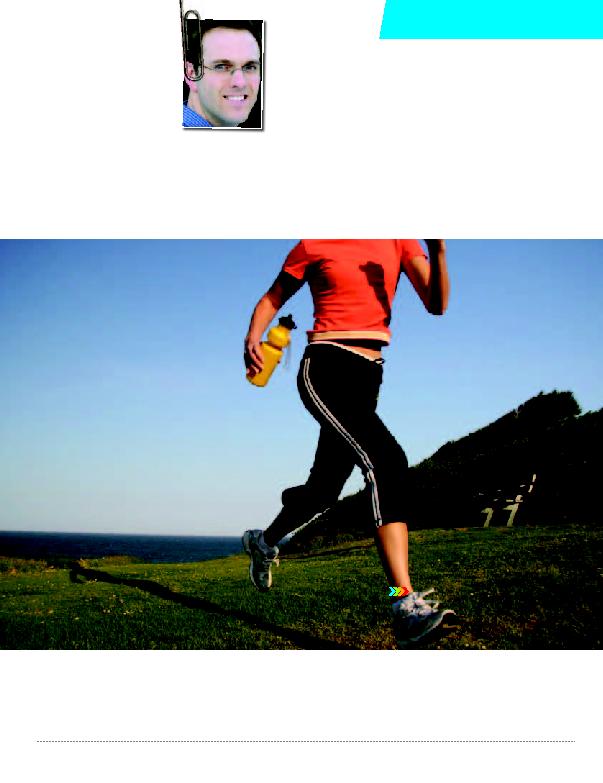
Derek Gilmer
Certifi ed Pedorthist and Owner of
Healthy Steps Pedorthic Clinic
PEDORTHIC CARE
TOTALFIT: BODY
I
f you fi nd your daily activities being limited by an aggravat-
ing foot, knee, hip or back pain, pedorthic care may be the
answer you are looking for. Perhaps you have suffered a
lower limb injury and desperately want to get back to your reg-
ular fi tness routine or favourite sport. Pedorthic care can help
you go from watching on the sidelines to participating actively.
Pedorthists are highly skilled health care professionals, trained
in the assessment of lower limb anatomy, including muscle and
joint function. They specialize in the use of footwear and sup-
portive devices to address conditions that affect the feet and
lower limbs. Working closely with other healthcare provid-
ers, Canadian Certifi ed Pedorthists help patients achieve and
maintain proper foot and lower limb health in order to enjoy
active lives.
Pedorthic care starts with a detailed assessment. Patient his-
tory, underlying conditions and lifestyle factors all play a role
in indentifying the cause of the pain and help dictate an ap-
propriate treatment plan.
PEDORTHIC ASSESSMENT INCLUDES;
Examination of footwear /wear patterns
Weight bearing and non weight bearing testing and
observation
Anatomical Alignment & Posture
Specifi c functional muscle testing
Gait Analysis
Pedorthists take a close look at footwear. Many sports-related
injuries can be prevented through proper fi tting sport-specifi c
footwear. Choosing to have one pair of running shoes for
each of your activities can put you at risk for injury. Footwear
used for cross training with side-to-side movements should be
different from shoes for running. It is important to learn about
your individual biomechanics and foot type when choosing
your footwear for a specifi c activity. Individuals with a lower
arch and lots of fl exibility will look for different shoes than
a high arch with limited fl exibility. Minimalist footwear may
work well for some individuals, but may be risky for others. A
pedorthist can help you determine the appropriate footwear
for your activity and foot type.
When an injury occurs and biomechanical faults are identifi ed,
custom-made foot orthotics and appropriate footwear choices
can help the healing process and help prevent recurrence.
The most common types of sports-related injuries are the result
of repetitive strain or excessive use of muscles and joints. They
are often referred to as overuse injuries.
Plantar fasciitis and Achilles tendonitis are two of the more
common such injuries. Plantar fasciitis is an infl ammatory con-
dition causing pain in the central or middle heel and arch
area. Achilles tendonitis is an infl ammation of the tendon on
the back of the lower leg just above the heel. Both of these
conditions can be prevented and managed through proper fi t-
ting footwear, orthotics when indicated, stretching and proper
training principles.
What is it? When do I need it?
Providing effective treatment for foot and lower limb pain
TIPS TO AVOID OVERUSE INJURIES:
1) Know your foot type & select the right type of sport-specifi c footwear
2) Increase your activity levels gradually to allow your body time to adapt
3) Replace your footwear regularly
4) Establish a good warm-up and stretching routine
5) Consult a pedorthist for a biomechanical exam (this will determine if orthotics or other devices may help)
5
11
www.TOTALFITmagazine.com
Vol. 2, Edition #3

